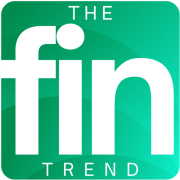Loan Rates React to Q3 Economic Growth
The economic performance of the United States in the third quarter of 2025 delivered mixed signals, challenging forecasts and forcing analysts to revisit their models regarding the future of monetary policy.

Behind these numbers lies a central question for consumers, businesses, and policymakers: how will this growth trajectory affect loan rates and the cost of credit in the coming months?
Moderate Growth in a High-Interest Environment
Since 2022, the U.S. economy has operated under a historically prolonged high-interest regime.
The Federal Reserve raised the federal funds rate to the 5.25%–5.50% range, aiming to curb persistent inflationary pressures.
Although core inflation has gradually eased, remaining around 2.8% in Q3 2025, it is still above the Fed’s 2% target.
In this context, the 2.1% GDP growth is interpreted as a “soft landing,” meaning the country managed to slow down without entering a recession, despite the higher cost of credit.
The Link Between GDP and Credit Costs
The relationship between GDP and loan rates is more complex than a simple direct correlation.
When the economy grows robustly, demand for credit tends to increase — consumers borrow more, businesses invest, and the government may expand spending.
This economic heating pressures inflation and, consequently, leads the Federal Reserve to maintain or raise interest rates.
Conversely, when GDP signals a slowdown, credit costs are expected to decrease to stimulate economic activity.
However, Q3 2025 showed resilient growth with still-stubborn inflation, creating a classic dilemma for monetary policy.
Economists at the University of Chicago Booth School of Business note that the current U.S. economic cycle differs from previous periods.
Financial Market Reactions
Yields on 10-year Treasuries remained above 4.5%, reflecting the perception that the Fed will maintain a restrictive stance for longer.
The mortgage market, which traditionally follows Treasury yields, remained pressured, with 30-year fixed rates fluctuating between 6.9% and 7.2%.
This persistence of high interest rates directly affects credit-sensitive sectors, such as real estate, automotive, and small businesses.
Data from the National Association of Realtors (NAR) show that residential home sales fell 6% compared to Q3 2024, while mortgage refinancings dropped more than 40%.
In consumer credit, average credit card rates exceeded 22%, and personal loans reached 12%, according to Bankrate.
Sectoral Dynamics of GDP
Household consumption — accounting for about 68% of GDP — grew 1.8%, supported by a still-solid labor market and higher disposable income from wage increases.
However, private fixed investment fell 0.9%, reflecting corporate caution in the face of high capital costs and global geopolitical uncertainty.
Residential construction also contracted 1.4%, pressured by high mortgage rates.
Government spending, on the other hand, increased 3.2%, driven by federal investments in clean energy and infrastructure.
The external sector contributed neutrally, with exports and imports essentially stable.
These data indicate an economy that is still functional but imbalanced: consumption remains firm while productive investment weakens.
Monetary Policy Outlook: The Fed Between Two Paths
Federal Reserve Chair Jerome Powell has signaled in recent speeches that “more evidence of sustained inflation deceleration” would be required before initiating a rate-cut cycle.
The Q3 reading reinforces the “higher for longer” narrative. Econometric models from the Federal Reserve Bank of Atlanta project that the U.S. economy’s real neutral rate may have risen to between 0.75% and 1%.
On the other hand, there are risks of over-tightening. The lag between monetary policy and its full effects on the economy could lead to an abrupt slowdown in 2026.
The combination of high household debt, rising capital costs, and contraction in private investment could translate into a sharper GDP decline.
Implications for Consumers and Businesses
For American consumers, the scenario indicates expensive loans for a longer period. Those seeking to buy a home, finance a car, or refinance debt face a restrictive credit environment.
Financial institutions are also tightening approval criteria, requiring higher credit scores and lower debt-to-income ratios.
In the business sector, especially among small and medium-sized enterprises, access to credit is becoming more selective.
According to a survey by the National Federation of Independent Business (NFIB), 38% of small businesses reported difficulty obtaining financing in Q3 — the highest level since 2012.
At the same time, large corporations are turning to the capital markets to issue fixed-rate debt, protecting themselves from future rate hikes. This segmentation may exacerbate inequality between companies with and without access to cheap credit.
